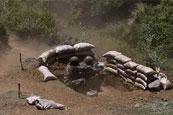n TTP men link their reappearance with the ceasefire but say they won’t harm anyone n Tribal Jirga elder says talks with Taliban still underway and no final decisions made yet.
PESHAWAR - The resurgence of Tehreek-e-Taliban Pakistan (TTP) in the KP chief minister’s native area - Matta tehsil in Swat district, has raised concerns. However, local sources say that there is no specific area being ruled by the Taliban in Swat but they have appeared in the region in the wake of ongoing talks between them and the government of Pakistan.
In a recent video in Swat, the TTP has declared that they have returned to Swat because of their ceasefire with the government in the ongoing talks and that they do not have any enmity with police or other security forces as there is a ceasefire in place.
The recent clash between the Taliban and police hit headlines in media. Later, the Taliban also handed over several cops captured in the shoot-out. The Taliban also declared that they have come to their native area of Swat after several years as a result of the ceasefire announced by them and government in the wake of talks that are underway in Afghanistan in the arbitration of the Afghan Taliban, Islamic Emirate of Afghanistan.
A senior security official told this scribe that the Afghan Taliban are interested in ceasefire between the government of Pakistan and TTP. “The Afghan Taliban also want the TTP to return to Pakistan; they want the talks to become successful,” he added.
Swat district does not share border with Afghanistan. However, the Afghan border is in Medan area of Lower Dir district, wherefrom Matta area of Swat can be reached. Medan area is also the native area of Maulana Sufi Muhammad, the erstwhile chief of the Tehreek Nifaz Shariat-e-Muhammadi (TNSM) who had launched his Sharia movement in the 1990s.
Maulana Khan Zeb, a tribal elder from Bajaur district who is also part of the Jirga that has been in talks with the TTP in Afghanistan, told The Nation that the talks were going in a positive direction but that the negotiations have not reached a final decision yet.
“Any final decisions will be taken as per the Constitution of Pakistan,” he added.
To a query if the Taliban have recently returned to Swat in the light of the Jirga decisions, he said that the Jirga had not reached any conclusion yet but that it may be an individual decision of the Swat Taliban to visit their native area in the wake of the ceasefire reached in the talks.
Genesis of the conflict:
The conflict in the Swat Valley had been simmering since the early 1990s and can be partly attributed to the establishment of Maulana Sufi Mohammad’s TNSM in 1992. The conflict peaked in 2008–2009 when Maulana Sufi started the “Tor Patki” (black turban) movement, calling for the quick implementation of Sharia rule.
Afterwards, the Malakand region witnessed incidents of violence prompting the government to launch counterinsurgency campaign through the paramilitary troops.
Sufi Muhammad joined the Afghan war in 2001 and enlisted thousands of his followers to fight against the US-led forces in the war-ravaged country. Finally, Sufi was detained and the TNSM was outlawed by the then-president of Pakistan Gen Pervez Musharraf. Maulana Fazalullah, Maulana Sufi’s son-in-law, took over as head of the TNSM and allied it more closely with the Tehreek-e-Taliban Pakistan (TTP).
Known as “Radio Mullah”, Fazalullah used to air his speeches via several FM radio stations where he propagated his opinions and a stricter interpretation of Sharia.
The aftermath of the 2007 Lal Masjid siege, which resulted in scores of fatalities during a security forces operation in Islamabad, served as another impetus for the conflict in the Swat Valley as Fazalullah instructed followers to take revenge. A second military operation was then carried out by the Pakistani government against the TNSM and its TPP supporters in retaliation.
In an effort to stop the violence, the provincial government of KP (the then NWFP), led by the Awami National Party, negotiated Sufi Muhammad’s release in 2008 and permitted Fazalullah to return to Swat. The provincial government began a fresh peace process in April 2008, and it culminated in a 16-point peace agreement.
The government also approved the Nizam-e-Adal Regulation to pacify the TNSM and under this law, courts and judge designations were Islamised: a judge was given the title of Qazi and each Qazi was given a Sharia adviser.
However, the TTP Swat broke the agreement because they saw the army’s continuing presence as a deal-breaker. Later, the military launched a counteroffensive against the TNSM in the middle of 2009 when they intensified their activities in the neighbouring area of Buner. The TNSM/TPP had been largely driven out of the Swat valley by the summer of 2009, and the area had been returned to government control.
Since the majority of TTP fighters crossed into neighbouring Afghanistan, there have been cross-border incursions from time to time. However, the government has recently launched talks with TTP, being mediated by the Afghan Taliban, and the process still continues.
Tehrik-Taliban Pakistan (TTP) has established a check-post on the Balasoor Top, a cloud-piercing peak in Matta tehsil of Swat district, local sources said on Thursday.
The sources also said that the checkpoint was believed to be meant for the Taliban’s own safety as they have already declared that they would not attack police or other agencies amid the ongoing ceasefire.
The local residents said that Taliban militants were not only in Balasoor Top but they were also present in great numbers in the mountains of Matta tehsil, including Bar Shor, Koz Shor, Namal, Gat Peuchar and other areas.






